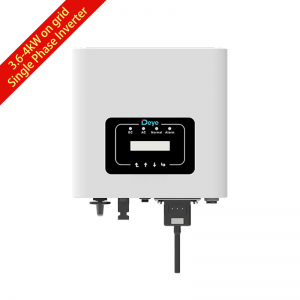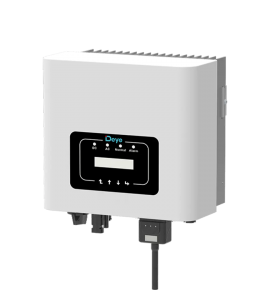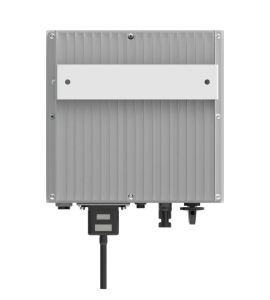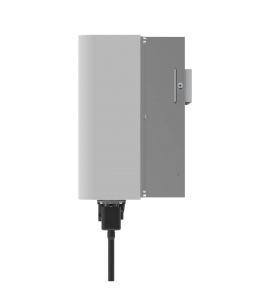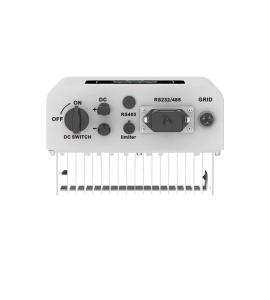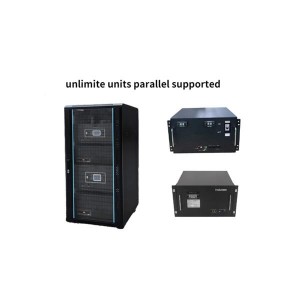

Deye 3.6kW 4kW On Grid Solar Inverter
ABOUT
Deye 3.6kW 4kW On Grid Solar Inverter
| Model | SUN-3.6K-G04P1-EU-AM1 | SUN-4K-G04P1-EU-AM1 |
| Input Side | ||
| Max. DC Input Power(kW) | 4.7 | 5.2 |
| Max. DC Input Voltage (V) | 550 | |
| Start-up DC Input Voltage(V) | 80 | |
| MPPT Operating Range(V) | 70-500 | |
| Max. DC Input Current(A) | 13 | |
| Max. Short Circuit Current (A) | 19.5 | |
| Number of MPPT/Strings per MPPT | 1/1 | |
| Output Side | ||
| Rated Output Power(kW) | 3.6 | 4 |
| Max. Active Power(kW) | 3.96 | 4.4 |
| Nominal Output Voltage / Range (V) | L/N/PE 220/230 (Optional) | |
| Rated Grid Frequency(Hz) | 50/60(Optional) | |
| Operating Phase | Single phase | |
| Rated AC Grid Output Current(A) | 16.4/15.7 | 18.2/17.4 |
| Max. AC Output Current(A) | 18/17.2 | 20/19.1 |
| Output Power Factor | 0.8 leading to 0.8 lagging | |
| Grid Current THD | <3% | |
| DC Injection Current(mA) | <0.5% | |
| Grid Frequency Range | 47~52 or 57~62(Optional) | |
| Efficiency | ||
| Max.Efficiency | 97.50% | 97.50% |
| Euro Efficiency | 97.30% | 97.30% |
| MPPT Efficiency | >99% | |
| Protection | ||
| DC Reverse-Polarity Protection | Yes | |
| AC Short Circuit Protection | Yes | |
| AC Output Overcurrent Protection | Yes | |
| Output Overvoltage Protection | Yes | |
| Insulation Resistance Protection | Yes | |
| Ground Fault Monitoring | Yes | |
| Islanding Protection | Yes | |
| Temperature Protection | Yes | |
| Integrated DC Switch | Yes | |
| Remote software upload | Yes | |
| Remote change of operating parameters | Yes | |
| Surge protection | DC Type lI/AC Type ll | |
| General Data | ||
| Size(mm) | 280W*272.5H*184D | |
| Weight(kg) | 4.8 | |
| Topology | Transformerless | |
| Internal Consumption | <1W(Night) | |
| Running Temperature | ‘-25~65℃,>45℃ derating | |
| Ingress Protection | IP65 | |
| Noise Emission(Typical) | <35dB | |
| Cooling Concept | Natural cooling | |
| Max. Operating Altitude Without Derating | 2000m | |
| Warranty | 5years | |
| Grid Connection Standard | CEI 0-21, VDE-AR-N 4105, NRS 097, IEC 62116, IEC 61727, G99, G98, VDE 0126-1-1, RD 1699, C10-11 | |
| Operating Surroundings Humidity | 0-100% | |
| Safety EMC/Standard | IEC/EN 61000-6-1/2/3/4, IEC/EN 62109-1, IEC/EN 62109-2 | |
| Features | ||
| DC Connection | MC-4 mateable | |
| AC Connection | IP65 rated plug | |
| Display | LCD1602 | |
| Interface | RS485/RS232/Wifi/LAN | |
Photovoltaic inverters are special one used in the field of solar photovoltaic power generation. Grid-connected inverters are the interface devices between photovoltaic cells and the grid. They are generally divided into photovoltaic grid-connected inverters, wind power grid-connected inverters, and power grid-connected inverters. There are several types of grid-connected inverters for equipment and grid-connected one for other power generation equipment.
Photovoltaic inverters convert the direct current generated by solar cells into alternating current energy that can be directly integrated into the grid and load through power electronic conversion technology. It is an indispensable core component in the photovoltaic system.
As an interface device between photovoltaic cells and the grid, the grid-connected inverter converts the electric energy of the photovoltaic cells into AC power and transmits it to the grid. It plays a vital role in the photovoltaic grid-connected power generation system. Modern technology is a photovoltaic The development of grid-connected power generation provides strong technical and theoretical support.
In autumn 2007, several energy-related organizations in Germany formed the German Federal Association for Water Resources (BDEW). In Germany, since 2009, relevant grid-connected regulations and guidelines for large-scale photovoltaic power plants have been established. According to the standard requirements established by BDEW, the prerequisite for photovoltaic systems of 1MW and above to be connected to the grid is that the power generation equipment must obtain this certification. At present, many domestic inverter manufacturers are also working on this standard certification.
For the first time, this technical specification requires generating equipment to be able to send reactive power to the grid. With the installation of certified product, the photovoltaic system will contribute to the voltage stabilization and fault ride-through of the grid. This will allow more PV systems to be connected to the grid. Any power generation system exceeding 100kW must participate in grid-connected management, that is, they must be able to limit active power output in a certain proportion according to the requirements of grid dispatching.

